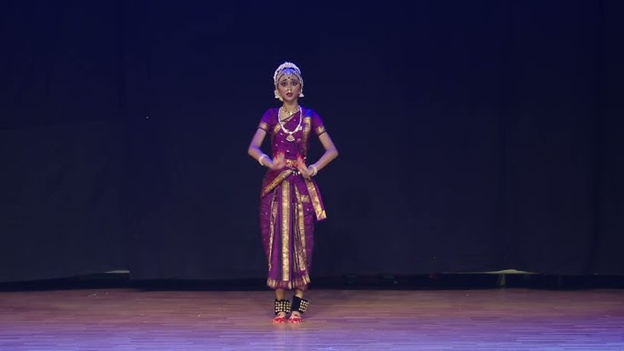Kuchipudi, one of India’s most vibrant classical dance forms, is celebrated for its graceful movements, expressive storytelling, and dynamic postures. However, mastering its techniques requires precision, practice, and attention to detail. Many dancers, especially beginners, tend to make common posture-related mistakes that can affect the overall presentation and impact of their performance. In this blog, Nrityangana explores these common errors and provides insights on how to avoid them to achieve perfection in Kuchipudi dance.
1. Incorrect Araimandi (Half-Sitting Posture)
Mistake:
One of the most fundamental aspects of Indian classical dance, including Kuchipudi, is the araimandi (half-sitting posture). Many dancers either do not bend enough or bend incorrectly, causing instability and an unnatural stance.
How to Fix It:
- Ensure that your knees are bent outward and your back is straight.
- Your feet should be turned slightly outward to maintain balance.
- Regular practice in front of a mirror helps in achieving the correct posture.
2. Stiff Upper Body and Lack of Fluidity
Mistake:
Kuchipudi is known for its fluid and expressive movements, but many beginners struggle with rigidity in their upper body. This stiffness makes the dance look robotic and lacks the graceful flow characteristic of Kuchipudi.
How to Fix It:
- Work on breathing techniques to relax your body.
- Focus on shoulder and neck flexibility during warm-ups.
- Watch performances of experienced Kuchipudi dancers and observe their smooth transitions.
3. Incorrect Hand Gestures (Mudras)

Mistake:
Hand gestures, or mudras, play a vital role in Kuchipudi’s storytelling. A common mistake is improper positioning of fingers or weak hand movements, which diminishes the impact of the performance.
How to Fix It:
- Ensure your fingers are firm and properly aligned when performing mudras.
- Regular practice of each mudra in front of a mirror can help in perfecting them.
- Avoid unnecessary tension in the fingers and wrists, keeping movements graceful yet strong.
Lack of Proper Footwork

Mistake:
Kuchipudi involves intricate footwork, and a common issue is either not landing correctly on the foot or failing to synchronize foot movements with rhythm.
How to Fix It:
- Practice basic adavus (dance units) regularly to strengthen your footwork.
- Pay attention to the sound of your foot tapping—it should be crisp and precise.
- Work on balancing weight equally on both feet to avoid instability.
5. Weak Expressions (Abhinaya)
Mistake:
Kuchipudi is deeply rooted in storytelling through facial expressions (Abhinaya). Many dancers focus solely on movements and neglect expressions, making their performance less engaging.
How to Fix It:
- Practice in front of a mirror and exaggerate expressions to develop clarity.
- Study the Navarasa (nine emotions) and their application in Kuchipudi.
- Record your practice sessions to analyze and refine expressions.
6. Ignoring Posture Transitions
Mistake:
Smooth transitions between postures are crucial in Kuchipudi, but many dancers rush movements or fail to maintain elegance, making performances look unpolished.
How to Fix It:
- Focus on slow, controlled transitions between movements.
- Practice bridging movements seamlessly instead of stopping abruptly.
- Maintain balance and poise throughout transitions.
7. Improper Eye Movements (Drishti Bhedas)
Mistake:
Eye movements, or Drishti Bhedas, are essential for directing audience attention. Many dancers either overuse or fail to coordinate eye movements with expressions, leading to a lack of focus.
How to Fix It:
- Learn the correct placement of eyes for each movement.
- Synchronize eye gestures with hand and body movements.
- Avoid excessive eye movement, keeping it natural and expressive.
Conclusion: Refining Your Kuchipudi Postures with Practice and Precision
Perfecting Kuchipudi dance postures requires patience, discipline, and consistent practice. By understanding and correcting these common mistakes, dancers can achieve grace, fluidity, and precision in their movements. At Nrityangana, we celebrate the richness of Kuchipudi and encourage dancers to embrace both technique and expression for a truly captivating performance.


